A major Daniel Libeskind project will get a considerable remodel after just 15 years. On February 14 in Toronto, the Royal Ontario Museum (ROM) announced plans to reconstruct large portions of its controversial Michael Lee-Chin Crystal wing, which Libeskind completed in 2008.’
The project, dubbed “OpenROM,” is led by Siamak Hariri of Toronto-based Hariri Pontarini Architects. It will gut 86,000 square feet of the main floor, including the lobby and the main entrance, and add 6,000 square feet of new gallery space. “We’re going to re-introduce ROM to Toronto with a design that, in effect, turns the museum inside out,” Hariri said in a statement.
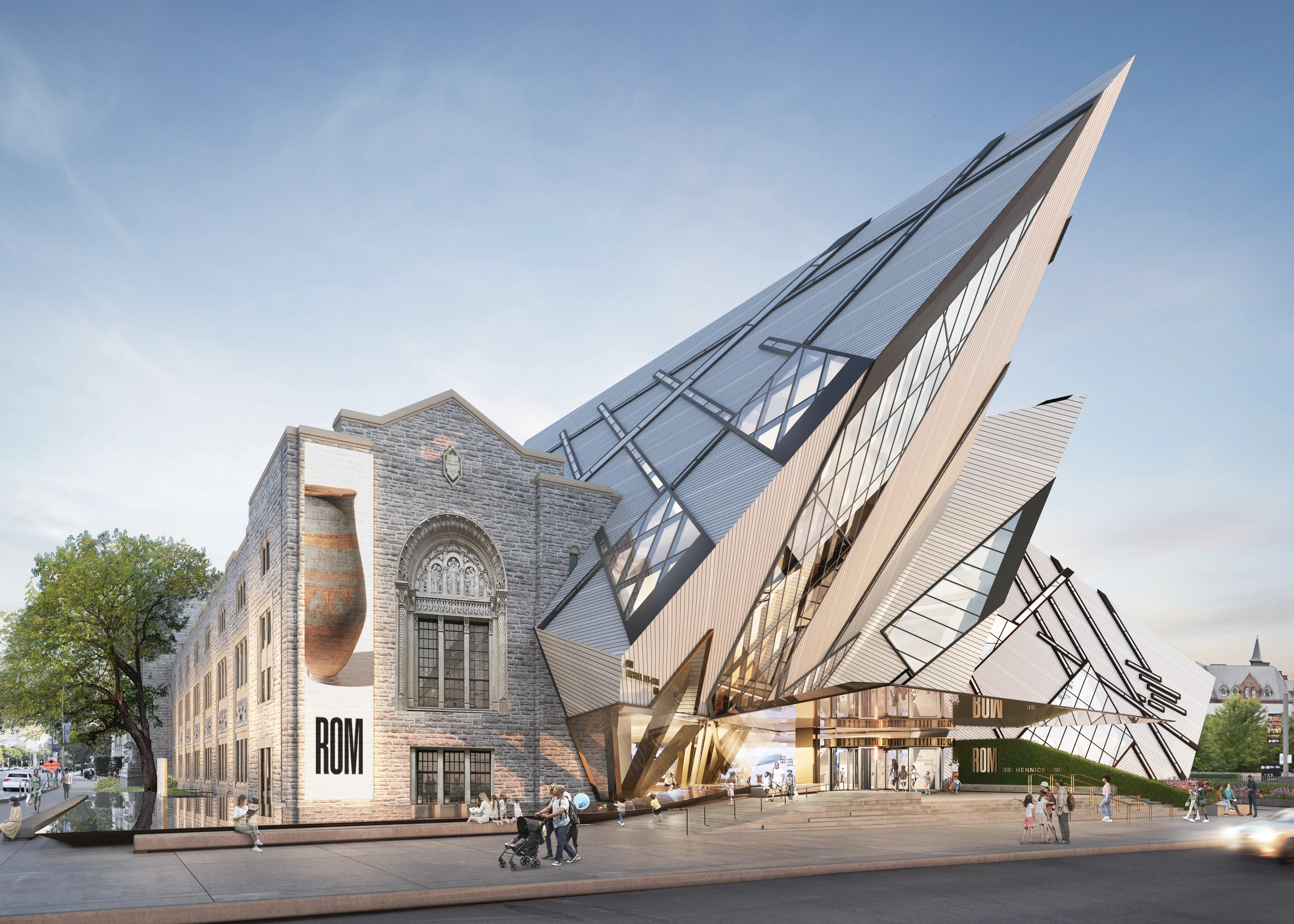
A bronze canopy will extend over a new Bloor Street entrance. Image courtesy Hariri Pontarini Architects
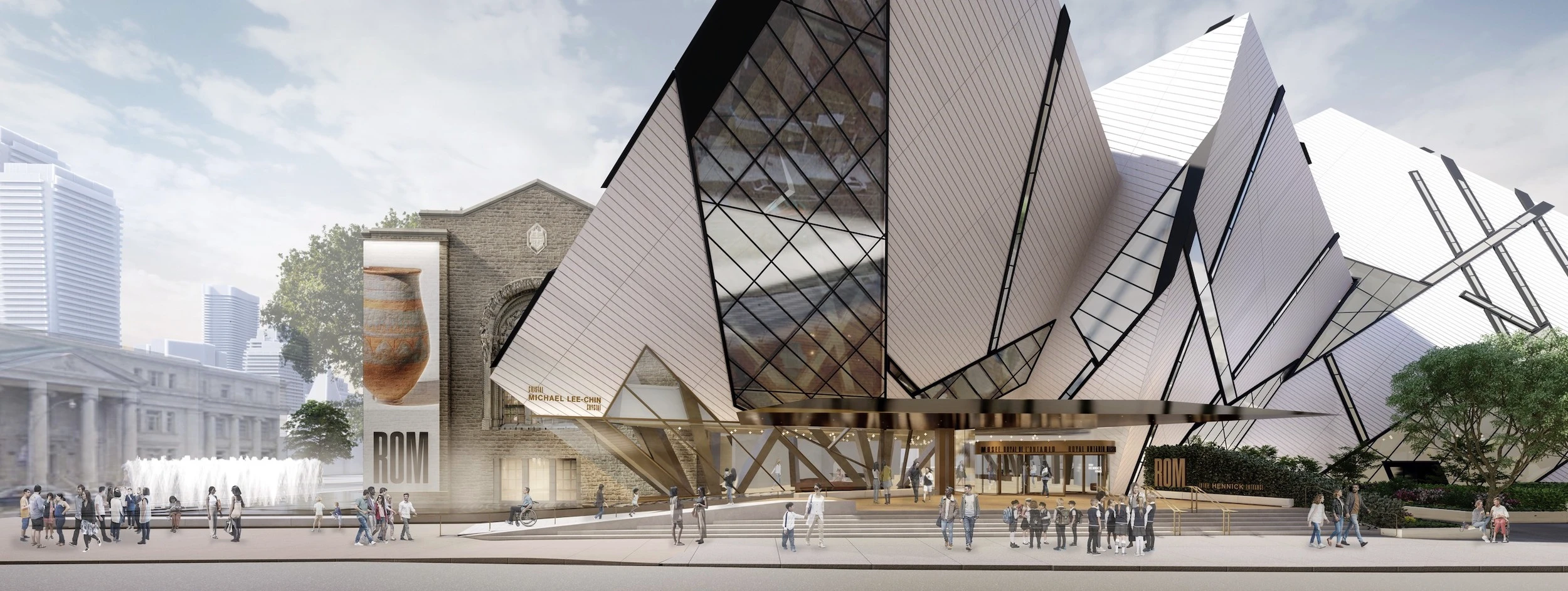
The Michael Lee-Chin Crystal expansion was both praised and derided upon its debuted in 2008. Image courtesy Hariri Pontarini Architects
ROM, which opened in 1914, showcases natural history along with arts and culture. The largest museum in Canada, it reported nearly 1.1 million visitors last year, putting it among the top 10 most popular museums in North America.
Public opinion on Libeskind’s Crystal has been divisive from the beginning. In 2002, Libeskind (who had recently opened his expansion to the Jewish Museum Berlin) won the Toronto commission with a scheme inspired, he said, by crystals from ROM’s collection. His new wing of five angular forms became emblematic of the museum but was criticized for its spatial awkwardness and for its standoffish urbanism.
Hariri’s iteration begins with the plaza out front, to which it adds a new ceremonial fountain. A new limestone ramp will bring visitors from here up to the new revolving doors, sheltered by a reflective bronze canopy.
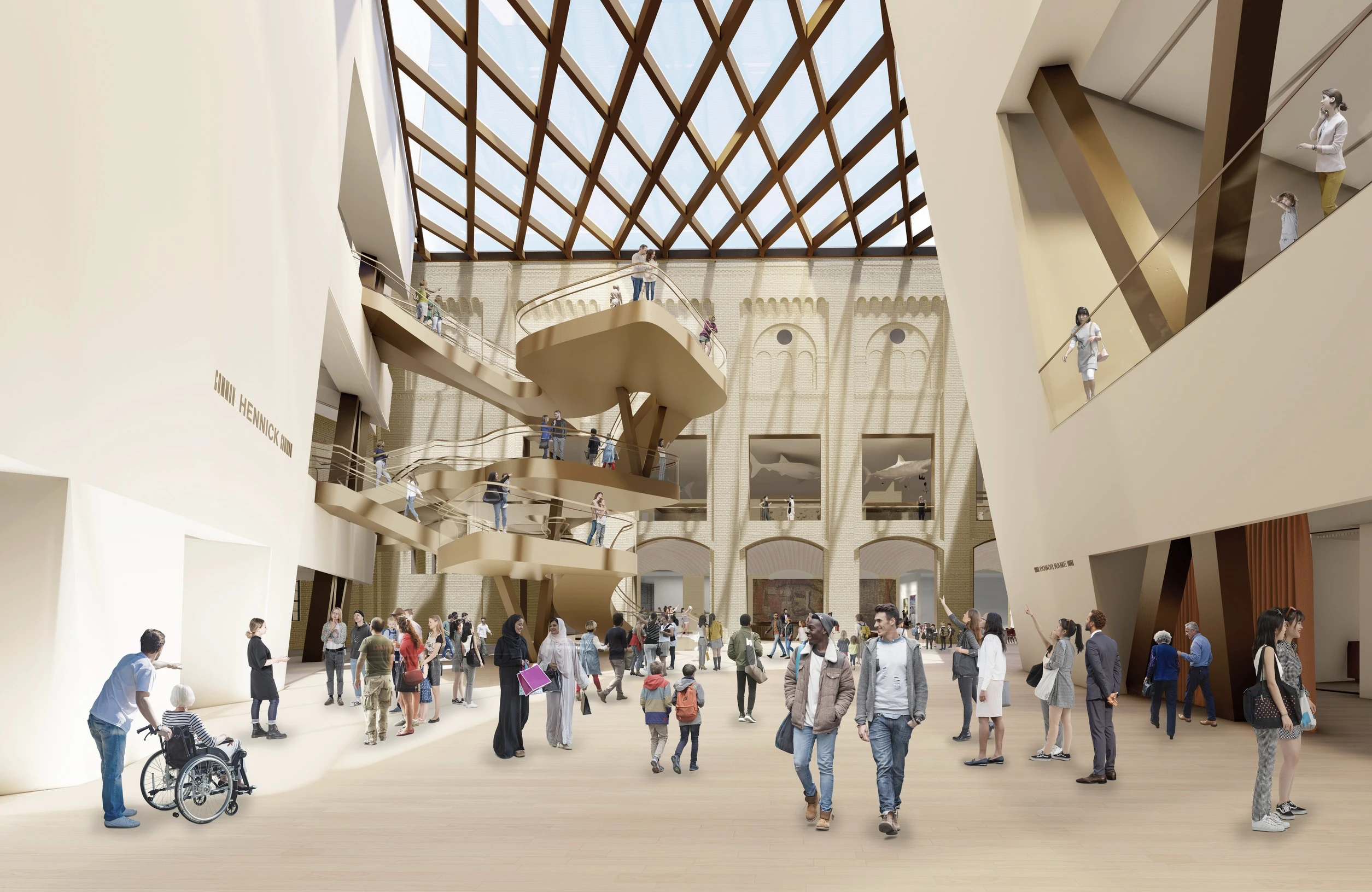
A sculptural stair inserted into the central atrium will provide a new connection between the modern and historic wings of the sprawling museum complex. Image courtesy Hariri Pontarini Architects
New windows cut into the Crystal will add daylight. Libeskind’s lobby, with a slanting black-granite floor and little natural light, will give way to a new entry sequence. Hariri’s design calls for pale limestone flooring and a decorative ceiling of whitewashed pine, framing a new bronze reception desk and several works from the museum’s collection.
Past a new event space will be the museum’s central atrium, now dubbed Hennick Commons. A new system of skylights will brighten this space, which will house a café and one showpiece design move from Hariri’s studio: the steel and bronze “lilypad stair,” a curvaceous structure that also creates accessible links between wings of the museum.
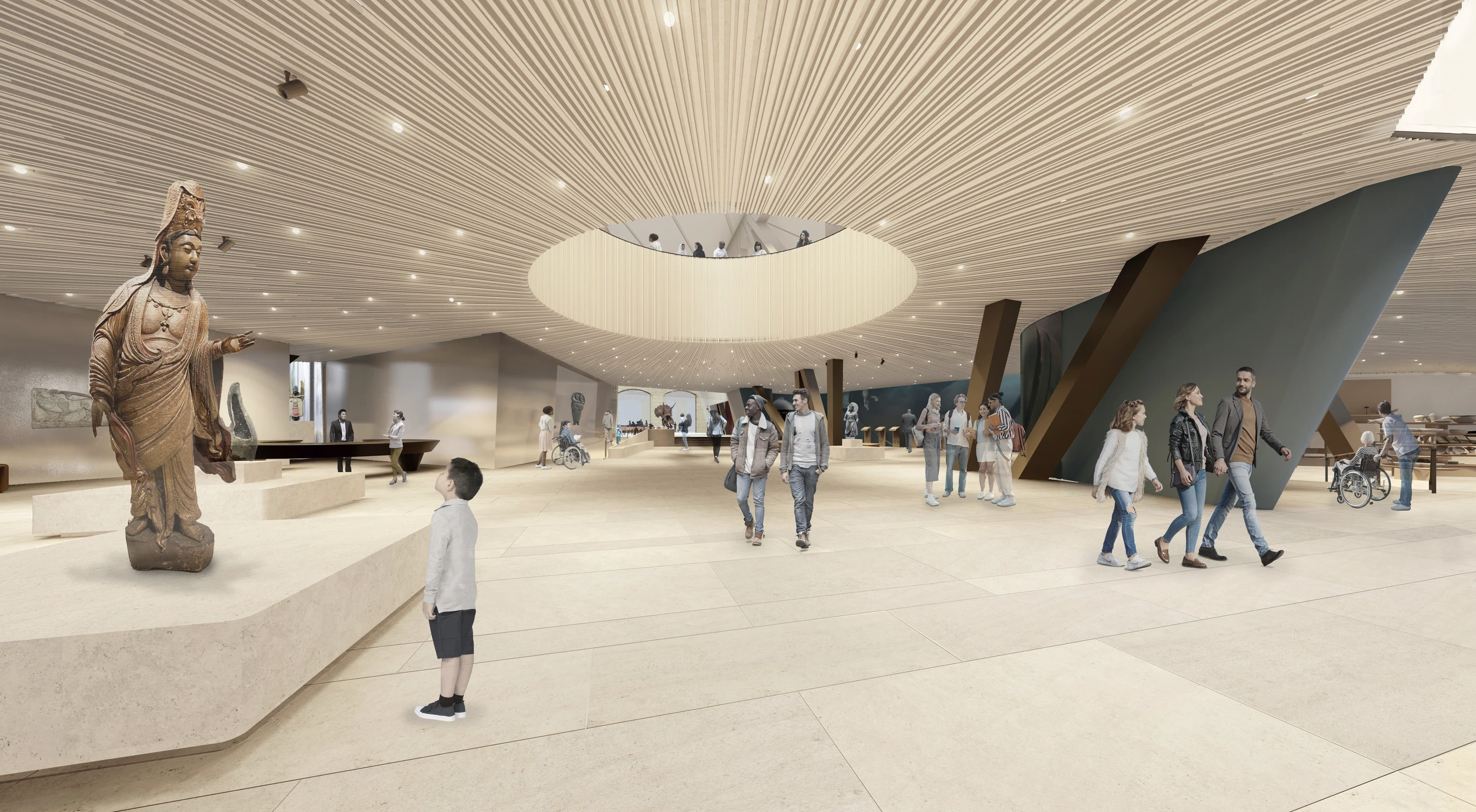
1
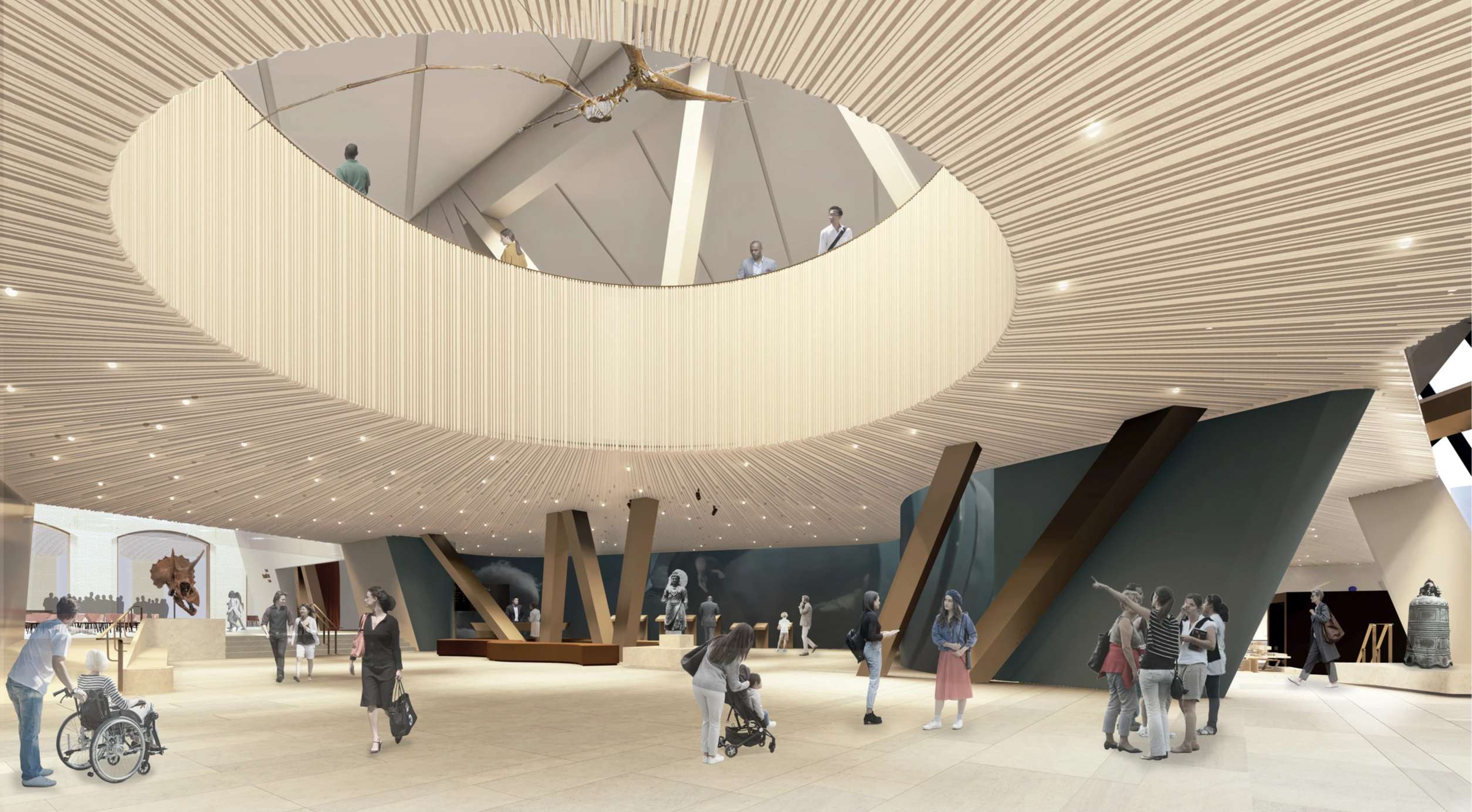
2
The lobby will be reconfigured, allowing visitors to view select items from ROM's vast collection before moving beyond the ticketing counters (1); a ceiling of whitewashed pine slats, radiates out from an oculus which offers views to the gallery above from the lobby. The sloping ground floor will also be flattened as part of the refresh (2). Images courtesy Hariri Pontarini Architects
Hariri previously completed two major changes to ROM’s landscape in 2017 and 2019, which connect closely to the OpenROM work. His team also completed the Baha’i Temple of South America in Santiago, Chile, in 2016; last year, his studio beat Diller Scofidio + Renfro and Mecanoo in competition to rebuild Toronto’s St. Lawrence Centre for the Arts.
ROM consulted Libeskind during the project’s development, and last week he expressed support for the changes. “ROM is a great example of civic architecture, from the historic buildings to its contemporary additions,” the architect said in an emailed statement. “The updating of the building is a collaborative and creative evolution in service of the Museum’s programs and facilities. OpenROM will enhance the visitor's experience of the Crystal and make it shine!”
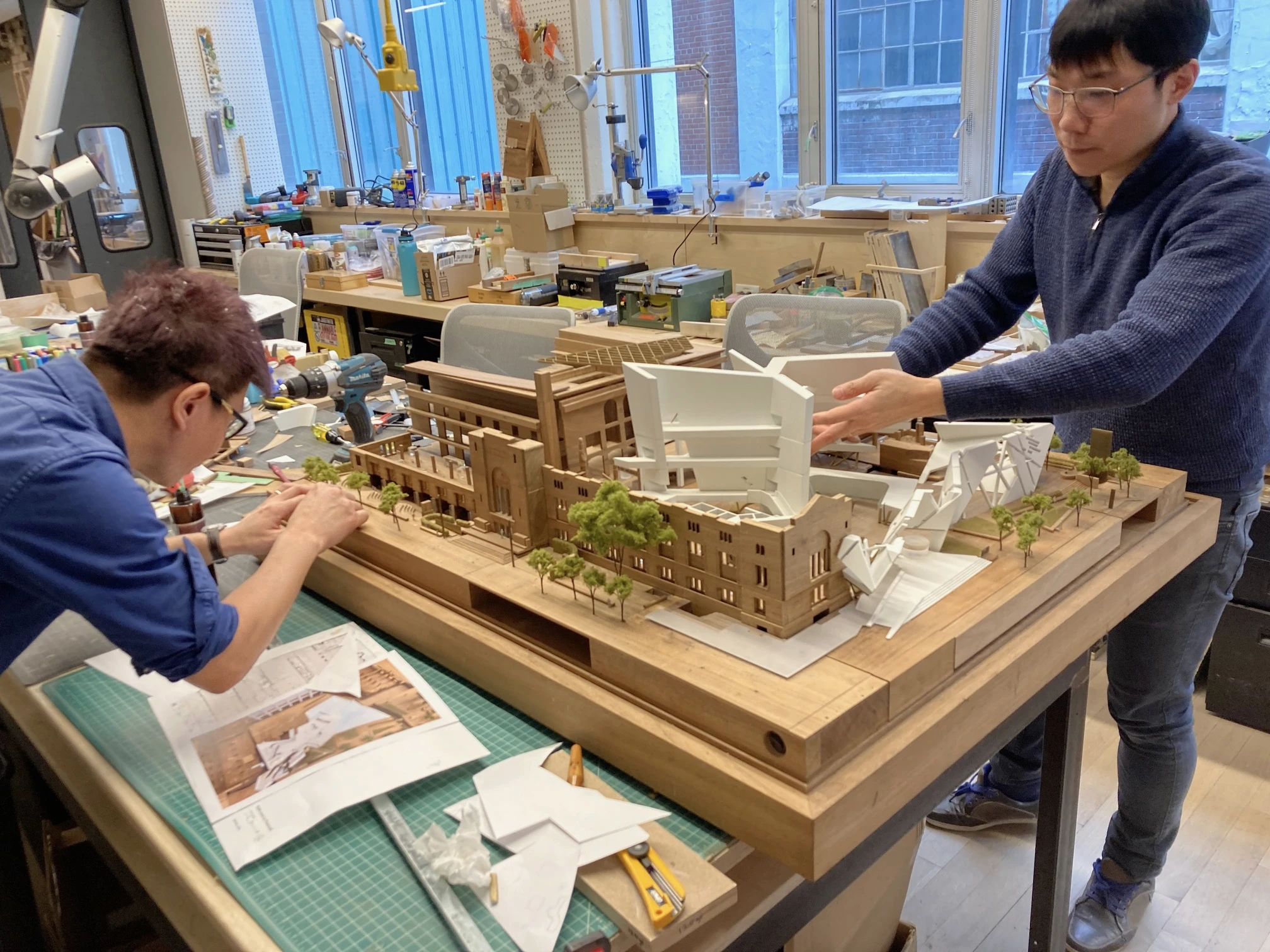
The main model of OpenROM, pictured at Hariri Pontarini Architects' studio. Photo © Photo courtesy Hariri Pontarini Architects
ROM director and CEO Josh Basseches frames the remodel as part of a rethinking of the institution, in which its main-floor galleries will be free and un-ticketed. “This is an opportunity to truly throw the doors of the museum open, both literally and figuratively,” he said in a statement.
Construction begins this month on the roughly $96 million project, which is entirely funded by private donations, including $37 million from the Hennick Family Foundation. The museum will remain open to visitors while work is underway.


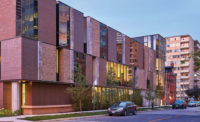
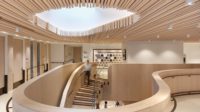
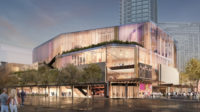
Post a comment to this article
Report Abusive Comment